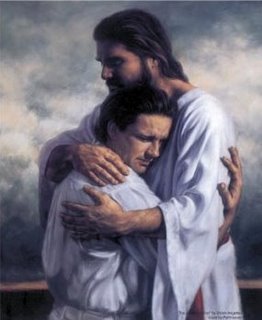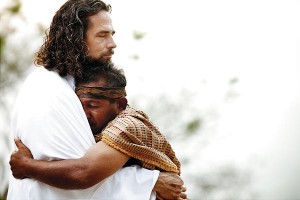The Tree of Life – Part 1
This is a three part miniseries which will deal primarily with the powerful symbolism encompassed in the Tree of Life. The second part of this essay will provide a broad survey of the Tree of Life in other religious traditions and the third installment will focus more exclusively on LDS canonical works and combine all the symbols into one interpretation based upon the sublime symbolism of Lehi’s dream. This first part simply sets the stage for the 2nd part. The meat is in the third part.
While the answer does not quite reach the meta-ethical level, some of the key passages of scripture which guide us in determining whether something is good come from Moroni Chapter 7.
Beginning with Moroni 7:16 we are instructed that “… the Spirit of Christ is given to every man, that ye may know good from evil; wherefore, I show unto you the way to judge; for every thing which inviteth to do good, and to persuade to believe in Christ, is sent forth by the power and gift of Christ; wherefore ye may know with a perfect knowledge it is of God… seeing that ye know the light by which ye may judge, which light is the light of Christ, see that he do not judge wrongfully; for with that same judgment which ye judge ye shall also be judged… and if ye will lay hold upon every good thing, and condemn it not ye certainly will be a child of Christ.”
In this passage the answer as to whether something is good is twofold: if it invites us to do good, and if it invites us to believe in Christ. I state that it doesn’t reach the meta-ethical level because “good” is part of the definition of good, in other words the definition of good is never fully explored. Nonetheless it is a very succinct answer and I invite all to re-read this chapter in its entirety. It is interesting to note that what is highlighted is not deontological in a legalistic sense but rather consequentialist in that actions are deemed to be good not in their own inherent nature but rather based on the consequences of said action. An action, concept, and idea is deemed to be good if the result is that it brings us closer to Christ and helps us do good continually. We are told that everything that is good comes from God and we are promised that we will be children of Christ only when we are willing to accept every good thing without condemning it.
The two keys we are given to determine if something is “good” are whether it invites us to do “good” and whether it invites us to believe in Christ. Let’s explore these topics a little deeper. John 14:15 states that “If ye love me, keep my commandments” and in Matthew 22:37-39, Christ, who is quoting Deuteronomy 6:5-7 states “…Thou shalt love the Lord thy God with all thy heart, and with all thy soul, and with all thy mind. This is the first commandment. And the second is like unto it, Thou shalt love thy neighbor as thyself”. While there are obviously many other commandments, it is apparent that when Christ was faced with Pharisees (who possessed a very legalistic interpretation of an extensive and impressive array of commandments) He focused exclusively on Love. In other passages, the Pharisees were often rebuked sharply despite their very rigid adherence to The Law precisely for overlooking weightier matters such as love.
So, what is love? We define Charity as the Pure Love of Christ and in 1 Corinthians 13 we learn that Charity is much more than giving or helping, but includes the attitude with which the gift is given. In Jacob chapter 2:17 we are instructed to “Think of your brethren like unto yourselves…”. In the Parable of the Good Samaritan, Christ uses a Samaritan, or an individual from a group who at one point sought to halt the construction of The Temple to illustrate how expansive our love should be.
There are many other examples throughout scriptures about how true love unites people even if they are different and how exclusivity and pride are spiritually dangerous. This essay has already mentioned the Pharisees, but we could also look toward the symbols of Babylon, Edom, The Great and Spacious Building and Rameumptom as symbols of pride and exclusivity.
We are told that we should be “in the world, but not of the world”. This is actually a rather delicate balancing act, especially the “not of the world” part, because if “the world” is defined as pride, then the first moment in which you feel superior to any other individual or group you have become very much of the world. This is the irony and the difficult part of true spirituality. The Pharisees were not criticized for adherence to the law (or lack of it), but for thinking that this adherence to the law made them superior to others. In Mark chapter 2 when the Pharisees criticized Christ for eating with sinners, the implicit statement was that the Pharisees believed that they were without sin. As the first step to repentance is recognizing our sin, this particular pride separated the Pharisees from the blessings of the Atonement. Those who believe they are whole will never seek the physician. The instant we feel superior to anybody else we are in that great and spacious building of Lehi’s dream.
It is part of human nature to believe that we are somehow better than others. This, in my opinion, is the genesis of a very dangerous notion, which is the idea that we have a monopoly on truth. This argument, in my opinion, is spiritually dangerous, first because of the pride it generates and also because depending on one’s level of investment in this notion it can also create confirmation bias whereby some are consistently looking for ways which evidence that “others” are less loved, less worthy, less virtuous, less glorious or simply less. In a predominantly LDS environment this type of confirmation bias, while very damaging, might potentially be feasible on a limited basis for some believers. In other words, in an environment where it is feasibly possible for one to interact primarily with other LDS this viewpoint might be sustainable. However, as one has more contact with those not of our faith the cognitive dissonance increases and it becomes more difficult to confirm this bias. The risk is that in order to avoid perceiving the goodness of all God’s children and His love for them, some reach the extreme of avoiding contact with non-LDS or post-LDS. Among those LDS who still adhere to once taught ideas regarding the superiority of any race, nationality or gender, the weight of confirming these dangerous and non-Christian ideas can be oppressive (to them and to others).
Let us return Moroni Chapter 7, one key to determining is an idea, an attitude, an action or an organization is good is that it will invite us to do good and to believe in Christ. To do good and believe in Christ imply that we keep His commandments. His commandments are that we should love God and love our fellow-being. To love our fellow-being means to treat them ALL as equals. Genesis 5:1-2 states that God created male and female in his own image. Acts 10:34 teaches that God is no respecter of persons. 2 Nephi 26:33 teaches that “all are alike unto God, both Jew and Gentile, and Matthew 25:40 teaches that “as ye have done it unto one of the least of these my brethren ye have done it unto me”. In other words, if one feels superior to anybody else whether it be for race, nationality, gender, educational level, sexual preference, socio-economic level, health condition, age or even their beliefs it is symbolically God that we are feeling superior to. If we separate ourselves from others, it is a part of the multi-faceted diversity of God’s own image and countenance that we are separating ourselves from and we are only damaging ourselves.
The key element of Lehi’s dream is not the large and spacious building, the mists of darkness, the river of filthy water, the broad roads, the terrible gulf, the waters of life or even the rod of iron. The central and most important element of Lehi’s dream is The Tree of Life. The next two segments of this mini-series will focus on The Tree of Life. In order to find the Iron Rod and navigate the mists of darkness we first need to exit the great and spacious building (we all have at least one foot in that building in one way or another). The next part of the mini-series will provide a brief (and incomplete) overview of The Tree of Life in many other faith traditions in order to extract which symbolic interpretations are common to all.
__________________
If the above post appears not to dwell enough on the actual Tree of Life or seems incomplete that is because it doesn’t and because it IS incomplete. This is the first in a 3 part miniseries.
To read the 2nd part follow this link: The Tree of Life part 2
To read the 3rd part follow this link: The Tree of Life part 3






I find this very insightful. I can’t wait for the rest of the series.
Thank you Jeremy